| « 25 / 30 Stuck in Between | 23 / 30 Basic Research » |
24 / 30 Black Boxes
Yesterday, the darkrooms were inaugurated. The analogue film class by Cinéma Copains developed their first 16mm films. At same time the printing class by Elisabeth Schmirl built an improvised darkroom to work with cyanotype to create blueprints.
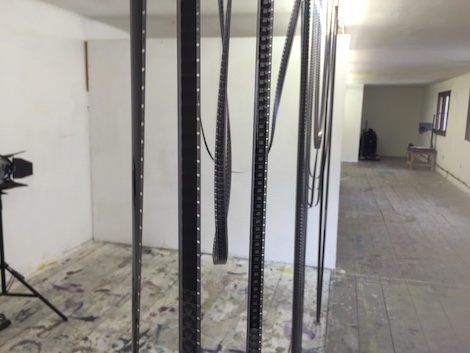
In digital times, both techniques with their dark rooms and analogue materials seem archaeological at first. Why is it important to learn developing analogue film when there are barely any analogue projectors anymore? Why to create prints in times of Indesign? I remember a conversation with Bernhard Cella a few weeks ago at the Festung. We were talking the importance of doing things yourself as an artist.
“In our society that relies more and more on abstract processes, you as an artist represent the opposite of abstraction. You represent for everybody else the knowledge how to develop a thought to a final object entirely by yourself.”
This is why Bernhard Cella became interested in making books, from the first idea to the final publication. The same motivation seems to be present in both the printing and the analogue film class: doing it yourself rather than relying on infrastructure. Hackers often talk about unblackboxing or reverse engineering in this context. They open a technical object and divide it into its different parts to find out how it actually works, to master all of its aspects.
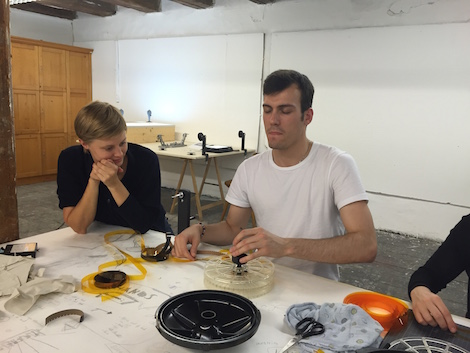
The first thing you notice is that the work in both classes is highly tactile. While digital editing and layout software requires mainly your eyes, for analogue work you have to engage all your senses. On this photo you see one of the students of Cinéma Copains practicing to reel film. His eyes are closed to simulate the lack of sight in the darkroom. His fingers have to rehearse the process several times and he has to learn to recognize the sound when the film is in the right position.
Analogue processes have also a different temporal structure. Making a print is not a workflow as in digital media. Oftentimes you have to wait for a material to dry or for a printing plate to heat up. These breaks bring forth a very different kind of working environment. When you visit Elisabeth Schmirl’s class you see a buzz of activities, each person working in its very individual rhythm. Many of the activities like applying colour are not cognitively demanding. One student compares them to short moments of meditation that are good contrast to the conceptual work involved in creating the plates.
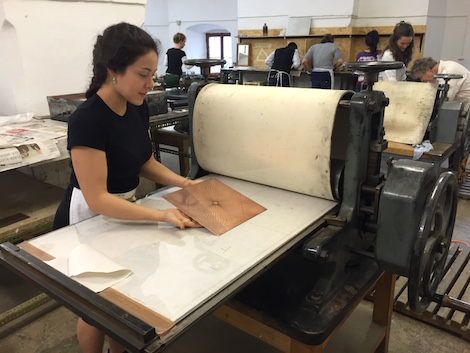
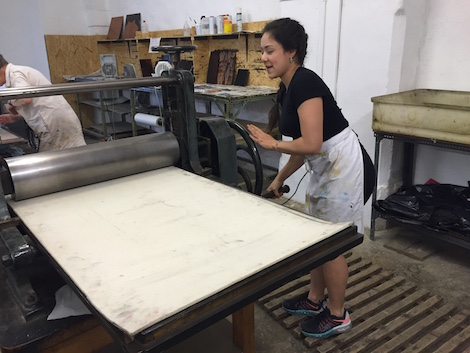
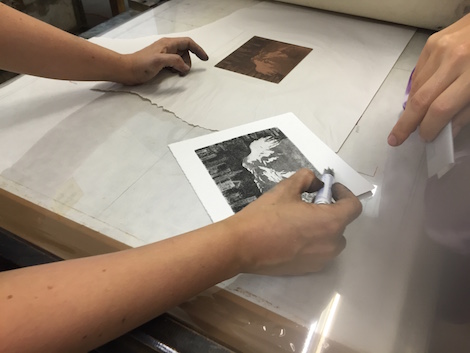
Probably coming back to these antiquated techniques changes also they way you work with digital media in the future. Not only do analogue media allow for a different expression and working rhythm, they are also a system counter-knowledge, an alternative infrastructure. They are a source for different working practices and hold alive a knowledge that is hard to appropriate by digital capitalism. As much as the revivals of vinyl records, as much do these alternative infrastructures wait for a return. This return will be unexpected and take on forms that cannot be anticipated, but some of us will still have the know-how.

